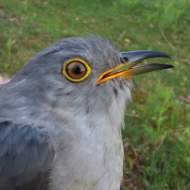Plastic Purge Continues
I've been reporting regularly about the reduction of single-use plastics and it's really pleasing to see progress keeps being made. Recently McDonald's announced they are going to replace their plastic straws with paper ones in the UK from September(1). The chain uses 1.8 million straws in the UK every day so this is a significant reduction. They are also trialling doing the same in other countries. McDonald's must be one of the biggest companies in regards to plastic straws in the world and if they can do something about it then it shows that anyone can.
Meanwhile, the United Nations has produced a report on curbing plastic and found that at least fifty countries are working to reduce plastic pollution(2). There's an incentive for developing countries to do it as plastic bags are causing floods by blocking drains and cattle are eating them. The report acknowledges that far more still needs to be done though and cautiously suggest plastic alternatives.
A high proportion of marine litter comes from fishing waste and the EU have announced new rules to reduce the amount of this(3). Producers of plastic fishing gear will now be required to cover the cost of waste collection, transport, treatment as well as awareness-raising measures.
Mammals in Decline
There have been regular reports on the state of the UK's wildlife and the latest one came from the Mammal Society and Natural England and it's bleak reading(4). Almost one in five British mammals are facing a high risk of extinction with the red squirrel, Scottish wildcat and grey long-eared bat listed as facing severe threats to their survival. Hedgehogs and water voles have seen their populations decline by 66% in the last twenty years. Even rabbit numbers are thought to have decreased somewhere between 24 and 48% in the last 25 years.
 |
| Water Vole |
Licenses to Shoot Ravens
Following previous controversial licences to shoot buzzards, the environment secretary Michael Gove has issued licenses to shoot ravens in various parts of the UK included Wiltshire and Dorset(5). A shepherd from Dorset claims that ravens were killing a couple of lambs every day from the 9000 sheep he tends. It's accepted that ravens will kill and eat dying or dead lambs though as far as I can tell there is little evidence that they actually kill healthy ones. It would be easy for a shepherd to see ravens pecking at lambs and assume they were responsible for the deaths.
Ravens are doing well but only after years being scarce. The RSPB are not arguing that such licenses are unnecessary- they try to stay in the good books of farmers- but are concerned at the lack of controls in place. They want Natural England to ensure non-lethal methods have been trialled first and a review of the application looking at the status of ravens locally. It seem that Natural England are only too willing to issue licenses to those who apply and don't appear to be ensuring effective controls are in place.
Local News
A few quick local stories now. The RSPCA were called to help a muntjac deer which had somehow found its way to the sixth floor of Bournemouth's Madeira Road multi-storey car park(6). The small deer was obviously not used to this time of environment and couldn't find it's way to safety. You can see a clip of the deer below.
Have you lost your car deer? 🦌 @RSPCA_official rescued a muntjac from the sixth floor of a multi-storey car park in #Bournemouth— BBC Radio Solent (@BBCRadioSolent) June 8, 2018
➡️ https://t.co/MCrcqcGfZJ pic.twitter.com/XpQJ9RxyI3
Also in Bournemouth, the start of the month saw a bloom of plankton at the start of the month(7). An algae called phaeocystis which often blooms after a period of strong sunlight and warm weather, together with nutrients building up in the sea. I visited the coast a little further along from Bournemouth and managed to see the latter stages of the bloom.
Finally, the SSSI of Poole Harbour has been extended by 1,800 hectares(8). Poole Harbour is a hugely important site for wildlife, particularly waders and the extension of the area means the health of the harbour will be better protected.
That's all for today but I'll leave you with a plea to get in touch about what you've seen locally or further afield! Details below! See you soon.
2: BBC News: 50 nations 'curbing plastic pollution'
3: Circular Ocean: New EU rules to reduce marine litter
4: Mammal Society: British mammal's fight for survival
5: RSPB: A response to news that licenses have been granted to shoot ravens in England
6: Bournemouth Echo: Deer trapped on sixth floor of multi-storey car park in Bournemouth...
7: Bournemouth Echo: This is why the sea in Bournemouth is brown at the moment
8: Twitter: @NEDorsetHantsIOW





























